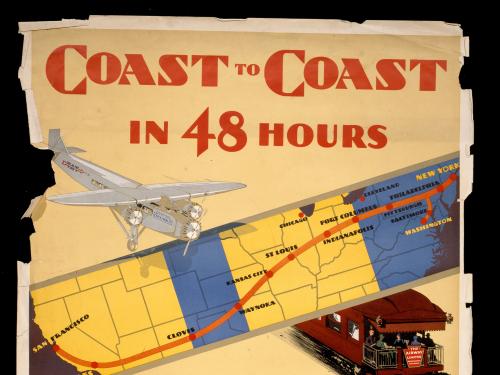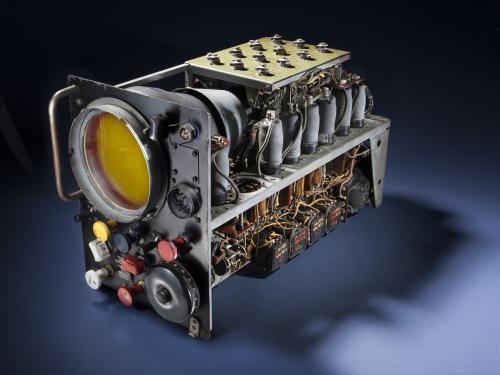
Stories of daring, stories of technological feats, stories of prevailing against the odds ... these are the stories we tell at the National Air and Space Museum. Dive in to the stories below to discover, learn, and be inspired.
Showing 1 - 10 of 26

August 23, 2022
In 1929, Transcontinental Air Transport (TAT) started passenger service between New York and Los Angeles using a combination of trains and planes.

April 07, 2021
Philip Van Horn Weems became a world’s leading expert in navigational techniques for aviators by the late 1920s. So much so that aviation luminaries availed themselves of his navigational instruction. Read about his life and access some of the navigation-related artifacts and archival documents he donated to us.

January 14, 2021
Satellites from NASA and private companies are making headlines. What’s their history and how might their future affect space and life here on Earth?

December 24, 2020
How did a misdialed phone number lead to a holiday tradition.

December 10, 2020
Most of us live in places that give us a less than ideal view of the stars because of light pollution from our cities and suburbs. But keeping our skies dark is important for so many reasons – for nocturnal animals, for science and astronomy, and for cultural traditions around the world.

June 05, 2019
The D-Day invasion relied on paratroop and glider landings the day before -- in moonlit darkness. In this blog, we explore the key technologies used to locate drop zones and landing zones under cover of darkness.

March 31, 2017
The U.S. Navy’s WAVES (Women Accepted for Voluntary Emergency Service) were a notable legacy of World War II’s influence on the evolving gender norms of the later 20th century.

November 19, 2016
We are at the end of our “Caption This” series. Throughout, you’ve been a tried and true caption contributor. Our last photo features a smiling woman, a clear globe, and some dramatic lighting

July 19, 2016
Today we celebrate the birthday of Charles F. Blair, an aviator made famous by his solo flight over the North Pole, whose real accomplishment is often overlooked.

November 21, 2015
Known for devising innovative and intricate spacecraft trajectories, and for his whole-hearted dedication to robotic space exploration, Robert “Bob” Farquhar left a strong impression on the American space program.
